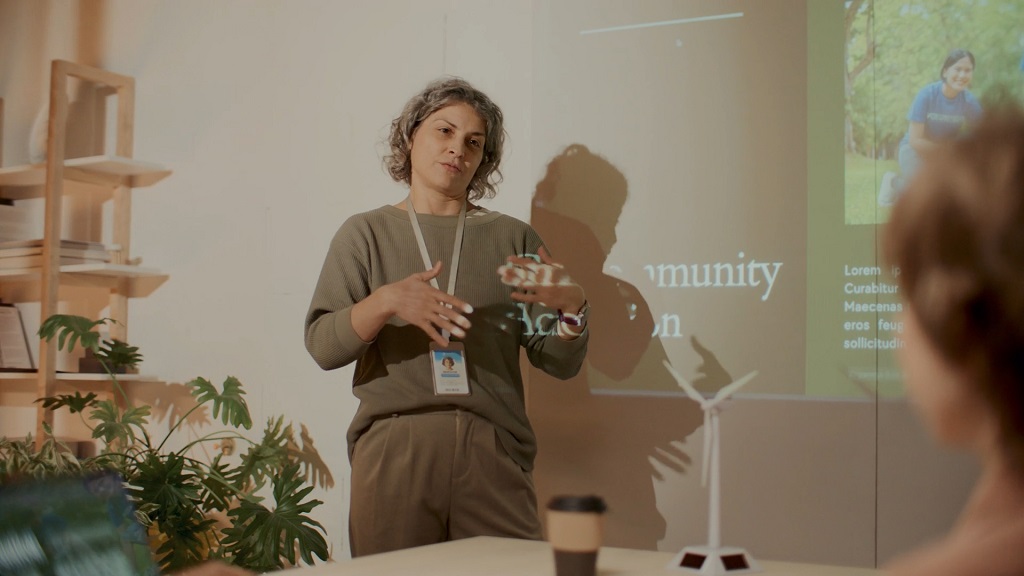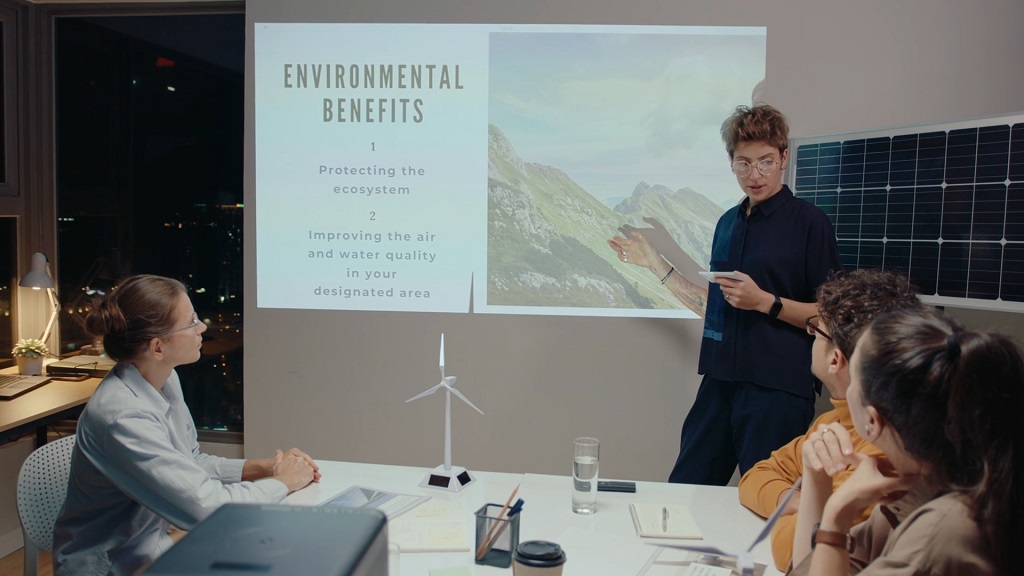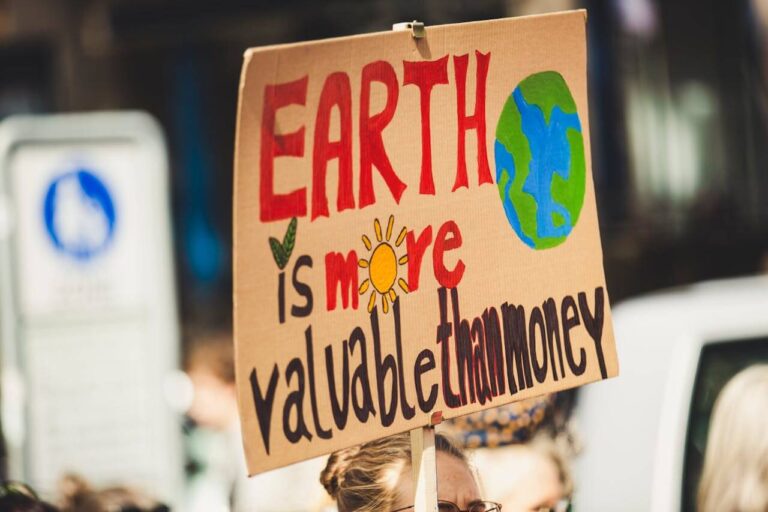Climate change is no longer a distant threat; it’s a daily reality affecting neighborhoods, infrastructure, and public health. Cities feel these impacts more directly than most areas due to their high population density, energy consumption, and resource use.
Urban heat islands, air pollution, flooding, and waste management issues are just a few consequences that show up close to home.
Local communities have an important opportunity to respond to the climate crisis through collective action. Change at the municipal level can ripple outward, influencing behavior, shaping policy, and creating visible improvement in residents’ quality of life.
Engaging citizens directly makes the message more personal and the action more immediate.
Preliminary Steps
Launching a climate awareness campaign begins with preparation rooted in facts and local relevance.
Success depends on knowing the specific challenges a city faces and identifying who can help tackle them.
Before designing posters, planning events, or creating messages, ground the campaign in research and collaboration.
Research and Understanding

Every city faces distinct environmental issues.
Urban areas might deal with frequent heatwaves due to limited tree cover, while others experience flash floods triggered by poor drainage infrastructure.
Air quality often differs drastically within just a few miles, particularly in areas near factories or highways.
To tailor the campaign effectively, assess local challenges and understand who is affected most. Several key steps should guide this research:
- Identify major environmental issues: Heat, flooding, air pollution, waste, droughts.
- Map vulnerable populations: Low-income communities, older adults, people without access to green infrastructure or public services.
- Examine existing climate policies: Look into what plans or pledges the city has already adopted.
Spotting policy gaps allows the campaign to focus on unmet needs or amplify existing but underused initiatives. This early research shapes goals, outreach strategy, and partnerships.
Stakeholder Mapping

Building a successful campaign depends on partnerships. Collaboration spreads responsibility, expands reach, and adds credibility.
A strong support network includes both institutional and grassroots voices.
Key stakeholder categories to prioritize include:
- Educational institutions: Schools, colleges, university departments, and student groups.
- Government bodies: Municipal climate offices, public health departments, transportation agencies.
- Nonprofit and community organizations: Groups focused on housing, sustainability, public health, youth development.
- Neighborhood-level influencers: Civic associations, tenant groups, community boards, local leaders.
- Businesses and entrepreneurs: Especially those offering sustainable products or sponsoring eco-initiatives.
- Creative contributors: Muralists, musicians, poets, and storytellers who translate climate messages into emotional and cultural experiences.
Forming a coalition allows for shared tools, broader outreach, and greater impact. Inviting various voices into campaign planning makes the work more rooted in community needs and realities.
Visible actions often generate the most attention and bring people together in shared purpose. Community-based activities not only educate, but also create strong emotional bonds and tangible proof of change.
Local Clean-Up Drives bring residents together to address pollution in parks, riverbanks, and urban lots. Volunteers see the immediate impact of their efforts, which helps reinforce long-term behavior change.
Tree Planting Days contribute to cooling neighborhoods, improving air quality, and enhancing local biodiversity. Choose locations that need it most—heat-prone blocks, schoolyards, or underserved areas.
Green Challenges add a fun, competitive element. Organize events such as:
- Zero-Waste Week: Households track and reduce their trash output.
- Car-Free Day: Residents use bikes, public transit, or walk to destinations.
- Plastic-Free Month: Encourage reusable options across businesses and homes.
These events build momentum and are easy to replicate throughout the year.
Educational Initiatives

Equipping people with knowledge creates long-term change. Education helps individuals link daily habits to bigger climate consequences.
Workshops and Seminars can address sustainable living, home energy efficiency, urban farming, and climate justice. Host them at libraries, community centers, or online. Involve local experts and citizen scientists to keep the tone practical and approachable.
School Collaborations are powerful. Partner with teachers to launch eco-clubs or develop student-led action projects. Hold art and essay competitions tied to climate themes. Work with school boards to weave sustainability into curricula, ensuring the next generation becomes well-informed and proactive.
Connecting education with creativity and hands-on involvement makes climate knowledge stick and inspires students to act at home and in their neighborhoods.
Creative and Digital Actions

Creativity expands reach and invites audiences who might not connect with data-heavy messaging. A mural can move someone in a way a pie chart cannot.
Social Media Campaigns provide a platform to share videos, infographics, personal stories, and weekly challenges. Use hashtags to encourage participation and track engagement. Partner with local influencers, artists, or activists to spread the message faster.
Platforms like SocialWick can help amplify campaign reach by boosting visibility and engagement on key posts, especially useful when trying to generate early momentum.
Art, Music & Murals for Climate offer powerful storytelling. Commission murals showing what climate action could look like in your city. Organize concerts or open mic nights themed around sustainability. Invite poets, dancers, and photographers to interpret climate impacts and solutions through their work.
Fusing emotion, art, and activism gives the campaign a soul—and that’s what gets remembered.
Planning the Campaign

Every campaign starts with a clear sense of purpose. Some efforts prioritize raising general awareness by sharing climate facts and local issues.
Others aim to change behavior, reducing plastic use, promoting cycling, or encouraging composting.
A more ambitious approach may target local policy, seeking stricter emissions standards or improved public transit infrastructure.
Setting SMART goals ensures clarity and accountability. A campaign should aim for objectives that are:
- Measurable: Use data to track progress.
- Achievable: Align goals with available resources and community capacity.
- Relevant: Focus on what matters most to local residents.
- Time-bound: Set clear deadlines for each milestone.
Aligning goals with available time, team capacity, and local climate priorities makes the campaign more focused and actionable.
Choose Your Approach
GoVocal’s participatory framework offers three strong engagement modes. Each one invites residents into the conversation in different ways:
- Outreach: Disseminate well-researched, locally specific information through flyers, videos, infographics, and pop-up booths. Content should highlight nearby issues like flood zones, air quality readings, or tree canopy maps.
- Consultation: Host online surveys or town hall polls to learn what residents care about most. Allow the public to weigh in on issues they want the campaign to address.
- Deliberation: Co-create solutions. Organize community meetings, workshops, or design jams where people propose, vote on, and refine campaign initiatives together.
Choosing one or combining several of these helps balance speed with community ownership.
Design the Message
Messages work best when tailored to local contexts and delivered in a tone that resonates. Some neighborhoods may respond to science-backed urgency. Others may feel more compelled by stories told through emotion, history, or lived experience.
Use a combination of storytelling and data, guided by MIP4Adapt’s communication psychology principles. A grandmother talking about how heatwaves affect her daily routine may carry more weight than a bar chart on temperature trends. Yet, placing both together increases impact.
Avoid jargon. Emphasize action. Build urgency while also offering hope and agency. That combination turns passive listeners into active participants.
Using Technology for Engagement
Digital tools can amplify participation and streamline campaign management. Platforms like GoVocal and similar civic engagement apps allow residents to contribute opinions, report local issues, and shape campaign direction in real-time.
Start by creating an online hub where community members can take part in polls, sign up for events, and provide feedback on proposals. Use these platforms to launch digital surveys that help identify which environmental issues matter most to different neighborhoods.
Host moderated forums or Q&A sessions where experts answer questions and residents suggest ideas. These sessions build trust and demonstrate transparency.
Tracking participation through analytics helps refine outreach. See which events draw attention, which messages resonate most, and which neighborhoods engage actively. Use those insights to adjust your strategy and focus efforts where they matter.
Technology also makes the campaign more accessible. Not everyone can attend in-person events, but almost everyone can tap into a phone or computer. Prioritize mobile-friendly design and multilingual support to ensure inclusivity.
When used wisely, digital tools create a feedback loop between organizers and residents. The result: a smarter, more adaptive campaign that evolves with its audience.
Building Alliances and Institutional Support

Strong campaigns often grow through cooperation. Building connections with key institutions increases reach, boosts credibility, and opens doors to resources that might otherwise stay out of reach.
Begin with city leadership. Reach out to municipal climate officers, sustainability departments, and city council members. Share clear goals and explain how the campaign aligns with broader climate strategies. Local governments often look for community-driven efforts to complement their official programs.
Seek backing from mayors or council representatives who support environmental action. Their endorsement can help secure venues, permits, and even funding. In some cases, small grants are available to support grassroots campaigns focused on community development, education, or environmental stewardship.
Link up with local environmental organizations that already have momentum. Nonprofits and advocacy groups often possess the materials, networks, and volunteers needed to supercharge awareness. Partnering with them avoids duplication of effort and sends a message of solidarity.
Also connect with neighborhood associations, religious institutions, and civic clubs. These groups are deeply embedded in local communities and often hold influence that outsiders can’t match.
Building alliances adds staying power. It shows that the campaign is more than a temporary buzz, it’s part of a larger, united effort to drive real change where people live, work, and gather.
Final Thoughts
Climate action doesn’t start with government mandates or sweeping legislation, it begins in neighborhoods, classrooms, and community halls.
Local campaigns can turn concern into movement and hesitation into action.
Every resident holds the power to shift habits, influence peers, and support environmental goals.
Small steps taken consistently can lead to meaningful change when backed by a shared sense of responsibility.

